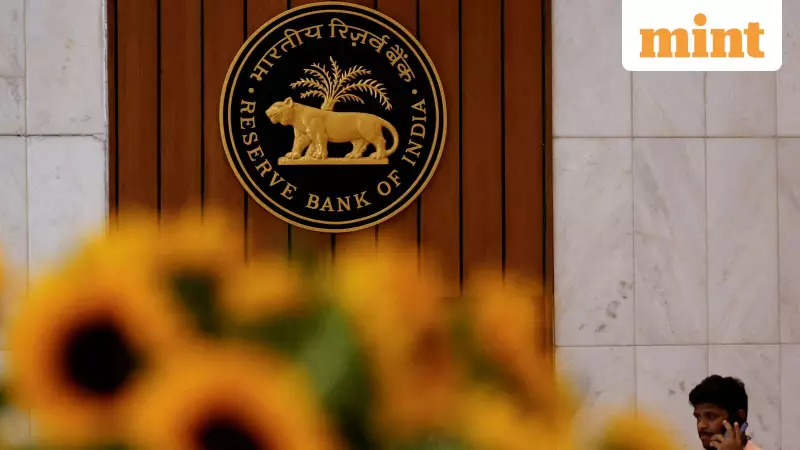
RBI Steps In to Support Exporters Facing Global Headwinds
The Reserve Bank of India has launched significant relief measures for export-oriented industries struggling with tariff-related challenges and their financial institutions. Announced on Friday, these comprehensive initiatives aim to improve access to working capital, increase borrowing limits, and postpone loan repayments through the end of 2025.
These measures, officially titled Reserve Bank of India (Trade Relief Measures) Directions, 2025, take effect immediately and target sectors most affected by international trade disruptions and global economic pressures.
Eligible Sectors and Banking Response
The central bank has identified 20 specific sectors eligible for assistance, spanning fisheries, chemicals, plastics and rubber, leather and textiles, footwear, precious metals and semi-precious stones, iron and steel, aluminium, electrical and surgical machinery and equipment, vehicles, furniture, and nuclear reactors.
Banking leaders have welcomed the RBI's intervention. Ashok Chandra, CEO of Punjab National Bank, expressed strong support for the measures, stating they would significantly help financial institutions support exporters, particularly those impacted by recent tariff increases.
Comprehensive Debt Relief Measures
The relief package includes substantial debt servicing assistance. The RBI has authorized deferment of payments for all term loans and recovery of interest on working capital loans scheduled between September 1, 2025, and December 31, 2025.
For working capital facilities like cash credit or overdraft accounts, interest accruing between October and December 2025 will be calculated using simple interest without compounding effects. Financial institutions may postpone recovery of this interest, with the accumulated amount convertible into a funded interest term loan repayable after March 31, 2026, but no later than September 30, 2026.
Anil Gupta, senior vice president at ICRA, noted that these regulatory measures combined with the government's credit guarantee scheme for exporters could provide crucial liquidity support, helping businesses manage cash flow pressures from deferred orders or payments.
Enhanced Access to Financing
The central bank has introduced several mechanisms to improve funding access. Lenders can now recalculate 'drawing power' for working capital by either reducing margins or conducting reassessments during the relief period. Drawing power represents the maximum withdrawal limit from working capital loans, typically computed monthly based on current assets like inventory and receivables after adjusting for bank-mandated margins.
Significantly, the RBI has extended the maximum credit period for pre-shipment and post-shipment export credit from 270 days to 450 days. This extension applies to export credit disbursed until March 31, 2026.
Additionally, financial institutions can liquidate packing credit facilities obtained by exporters on or before August 31, 2025, where goods shipment became impossible. This liquidation may proceed based on legitimate alternative sources, including domestic sales proceeds or substitution with proceeds from other export orders.
Eligibility Criteria and Asset Quality Considerations
To qualify for relief, borrowers must be engaged in exports within the specified sectors, maintain outstanding export credit facilities, and be classified as 'standard assets' by lenders as of August 31, 2025.
Gupta from ICRA highlighted potential implications for asset quality, noting that extensive use of moratorium or deferment options could increase uncertainty for lenders. While 5% provisioning on relief-affected loans might increase provisions, the impact on near-term profitability should remain manageable.
Lenders must develop comprehensive policies for implementing relief measures, including objective criteria for considering assistance, with all details publicly disclosed.
Complementary Government Initiatives
The RBI also formalized two government measures announced on November 13 concerning export realization and calculation. The government extended the time limit for realizing and repatriating full export value from nine months to fifteen months from the export date. Additionally, the shipment period for goods increased from one year to three years from receipt of advance payment or as per agreement, whichever comes later.
Earlier, the Union cabinet approved two major initiatives totaling ₹45,060 crore to strengthen India's export ecosystem and alleviate liquidity pressures. These include the Credit Guarantee Scheme for Exporters (CGSE), providing collateral-free loan guarantees up to ₹20,000 crore, and the Export Promotion Mission (EPM).
Munindra Verma, CEO of trade receivables exchange M1 NXT, emphasized the timing significance of the ₹25,060 crore Export Promotion Mission, particularly for MSME exporters navigating global challenges like recent U.S. tariff escalations. He noted the initiative could unlock substantial opportunities by expanding market access and improving business operations while strengthening India's trade competitiveness through addressing logistics, credit access, and export infrastructure challenges.





